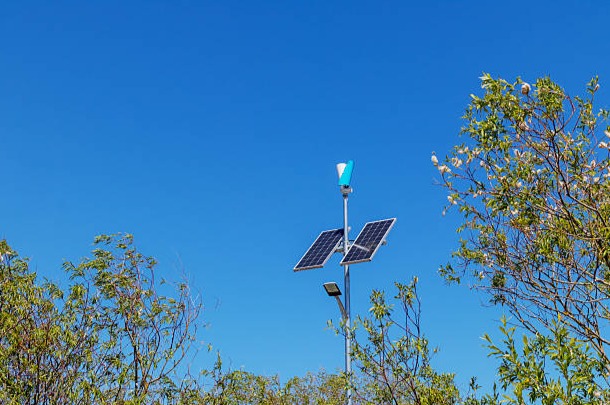Solar Street Lighting Explained: Benefits, Costs, and Real-World Applications

Demand for sustainable energy solutions worldwide has resulted in an increased focus on solar street lighting. Unlike traditional grid-based lighting systems, solar street lights are modern solar-powered lights that combine solar energy with LED technology efficiency. They are cost-effective and suitable for streets, parks, parking lots, and even remote areas. In attempts to build smarter city infrastructure, outdoor solar-powered LED lights provide a means to reduce energy costs, curb carbon emissions, and enhance energy-efficient smart city public safety. Regardless of being in urban centers or underserved rural areas, solar street lights are revolutionizing illumination systems everywhere, making greener and brighter strides across the globe.
How Solar Street Lighting Works
The operation of solar street lights is based on an autonomous system that collects solar energy through photovoltaic panels, storing the energy in high-capacity batteries, which is later used to power LED lights placed outdoors. These systems are built to operate without any electrical grid connection and are therefore suitable for urban and off-the-grid locations. During the day, solar panels gather sunlight and convert it into electricity that is stored in the battery bank. When the sun goes down, the intelligent controller turns on the LED lamp and uses the stored energy to power it. Bright LED lighting is available all night long. These systems have smart controls with the capability to change brightness levels based on activity, the weather, preset schedules, or power-saving modes to increase the lifespan of the system. Their modular construction enables quick installation with minimal civil works, and independence from the grid improves resilience to outages and natural disasters. Most importantly, solar panels used together with LEDs guarantee maximum efficiency since LEDs are far more economical and durable as compared to traditional light bulbs.
The Key Benefits of Solar Street Lighting
Just like other solar devices, solar street lighting systems also have a number of advantages which extend beyond energy savings. These systems have a pronounced impact on the environment as they reduce fossil fuel dependency which in turn greenhouse gas emissions. Communities that are located in areas with high sunlight exposure can completely replace the need for external electricity and instead utilize the solar street lighting system to provide community centered autonomous illumination. In addition, these systems also help reduce overall costs. Although solar street lights come at a higher upfrontCost, the elimination of monthly bills linked to their use, lowered maintenance costs and utility bills together offset this cost in the long run. The key highlights in this scenario also include reliability and safety. Since these lights are designed to function independently from the electrical grid, they remain operational during blackouts. In public areas, solar street lights increase the level of safety provided, help in crime deterrence, and improve road safety due to the enhanced visibility provided by uniform and high-quality lighting. Because solar street lights are not tied to complex wiring, the possibility of electrical accidents is significantly lower. Also, vandalism is not as effective against tamper resistant solar fixtures which makes them safer.
In summary, these advantages help achieve a cleaner, safer, and more economically sound rural and urban environment.
Understanding Why Solar Street Lighting Comes With Costs
It is crucial to understand the costs associated with solar lighting, both upfront and ongoing, especially when considering solar lighting’s long-term benefits. A good quality solar street lighting system has an upfront cost of $1,500 to $3,500 per unit. This price range is due to the device’s battery capacity, pole height, lighting intensity, and additional smart features like motion sensors or remote monitoring. These systems come as integrated or split-type solutions, with integrated options offering compact designs where all components are housed in a single unit. The cost of outdoor LED lighting itself is relatively low, and when paired with solar, the energy consumption drops dramatically, resulting in lowering both the size and cost of solar panels needed. Due to minimal operational and maintenance expenses, cities and municipalities are able to recoup their investment in solar street lights within five to seven years. Additionally, there is an increasing number of government incentives, subsidies, and grants that support green infrastructure projects which are highly beneficial for private and public stakeholders.
When it comes to upkeep, solar systems only need regular panel cleaning and battery servicing after 5-8 years. Compared to traditional systems, the maintenance burden is significantly lower. Because of these factors, solar lighting systems are more financially appealing for communities looking to achieve long-term savings and foster sustainable development.
What to Think About While Selecting a Solar Lighting Maker
When looking to invest in solar street lighting, it is best to work with a trusted solar street lighting manufacturer to guarantee optimum system performance, longevity, and reliability. A reputable company should provide high-grade components such as monocrystalline solar panels, lithium-ion or LiFePO4 batteries, and high-lumen outdoor LEDs. Consider if the manufacturer provides integrated system design, thorough testing procedures, and warranties that provide assurance. Many successful solar projects stem from collaboration with manufacturers who supply not just equipment, but also guidance in planning, system design, and post-installation services. Ideally, the company should have proven experience in diverse climates and project scales from community roads to highways. A reliable supplier should also aid customization to suit specific regional requirements like illuminated signs in snowy, rainy, or coastal regions. Check for reviews, certifications, and customer testimonials that affirm the manufacturer’s quality and service standards to confirm their claims. In summary, a manufacturer’s brand reputation coupled with illusive customer feedback directly impacts the performance and ROI of the systems over the years.
Use Cases and Adoption Trends
The adoption of solar street lighting is no longer confined to a specific niche market; rather it is being embraced globally across various use cases. In rural villages in Africa and Southeast Asia, systems are providing access to public lighting for the first time, allowing children to study after dark and local businesses to operate in the evenings. In Europe and North America, solar street lights are incorporated into smart city projects seeking to reduce carbon emissions and enhance energy resilience. Solar lighting is also adopted by airports, campuses, resorts, and industrial parks to reduce operating expenses and improve sustainability metrics. Relief agencies use portable solar street lights in disaster areas where grid power is unavailable to enable safe nighttime rescue operations. Municipalities are retrofitting parking lots, bike paths, and pedestrian walkways with outdoor LED solar lighting to meet green building standards and reduce their carbon footprint. Solar street lighting stands out as one of the most promising technologies for future-ready infrastructure due to its unmatched flexibility, efficiency, and resilience. Solar street lights will continue to clear the way toward a sustainable future while advancing smart urban planning and cleaner energy transitions.
